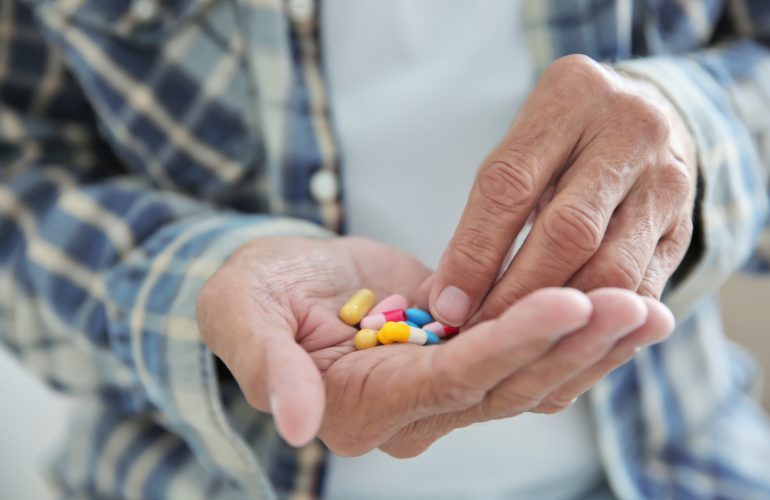To some degree, we all self-medicate. Rough day at work? A cold beer can be the best thing you tasted all day. Bad news? A glass or red wine will make you feel fine. Minor aches and pains? Advil to the rescue! While these are light-hearted examples of self-medicating, the use of drugs and other substances to deal with pain or issues can become a serious and sometimes dangerous problem.
What is Self-Medicating?
Self-medicating is the act of taking legal or illegal substances to self-treat all sorts of conditions, illnesses or symptoms like pain and anxiety. It also includes using food, caffeine, and alcohol to help us feel better about real or perceived problems. Some people eat more to calm their nerves while others do it when they are depressed. The use of prescription medications is considered self-medicating, as is the use of over-the-counter remedies. In one way, shape or form, we all engage in some degree of self-medication. For many people, it does not become a problem, but for others, misuse and overuse of medications has become a serious issue. Overdose and addiction may also be negative outcomes, with the most unfortunate result being death.
(NOTE: Interested in Nursing CEUs? Checkout my Nursing CEUs on CEU Academy and try a FREE CEU today!)
Common Characteristics of the Self-Medicating Patient
According to some experts, more is being learned about individuals who potentially have co-occurring disorders, or what used to be called dual diagnosis. Some individuals who are dealing with pain may be depressed, a classic co-occurring pair of conditions. They may use, misuse, or overuse psychotropic medications to ease symptoms of depression and opioids to manage symptoms of pain. When the individual believes their symptoms can be managed on their own, they are more likely to engage in this behavior. Psychological issues may contribute heavily to self-medicating.
Most people take their medications as prescribed and will not deviate much from their doctor’s orders. They take their medications and wait for symptoms to subside. They innocently attempt to treat problems like sleeplessness, anxiety, depression, pain, or allergies and find that their medications are not working the way they want them to. So, they take a little more, or a double dose. Perhaps they mix their prescription medications with marijuana or alcohol. This is when self-medicating can become dangerous. Even taking over-the-counter remedies from a local drugstore can interfere with certain prescription medications and cause unwanted side effects.
Medications Commonly Used to Self-Medicate
The most commonly used substances to self-medicate are the central nervous system depressants (CNS depressants), psychostimulants, opiates, cannabis and organic solvents. CNS depressants include alcohol, sedatives and benzodiazepines like Valium, Xanax, and Ativan. Psychostimulants are usually prescribed to younger people who are diagnosed with ADHD and include drugs like Adderal, Vyvance, and Ritalin. Other drugs in this category include crack, cocaine, amphetamines, nicotine and caffeine. Opiate addiction and opioid-related deaths are major problems in the United States. These medications are effective but potentially very dangerous. They include morphine, codeine, Actiq, fentanyl, hydrocodone, OxyContin, Percocet, Percodan, Vicodin and heroin. Besides cannabis, organic solvents are sometimes used to self-medicate and include paint, cleaning agents, and other chemicals that produce a high.
Final Words on Understanding the Self-Medicating Patient
Almost everyone engages in self-medicating to a degree. Most people will innocently take medications as prescribed. Others will become dependent or addicted. While there are many shades to self-medicating, it can become dangerous and even deadly.
(NOTE: Interested in Nursing CEUs? Checkout my Nursing CEUs on CEU Academy and try a FREE CEU today!)
More Nursing Articles
- Working with the Non-Compliant Patient
- Dignity in Senior Care
- HIV and Aging
- The Elderly Diabetic Resident
- Myocardial Infarction: A Brief Review
- Pain Management
- Medication Errors: A Quick Review

